Sugaring Hair Removal: Everything To Know Before Your First Appointment
Sugaring Hair Removal: Everything To Know Before Your First Appointment
If you’re considering an alternative to waxing, you’ve probably heard of sugaring and are curious how its benefits compare to other popular hair removal methods. Sugaring involves applying a warmed-up, all-natural paste that adheres to unwanted hair (not the skin) on the designated area, leaving it on for a minute or so and then removing the stubble in the same direction as the hair growth. Like waxing, sugaring removes hair from the root for a clean look that lasts for weeks and decreases hair growth over time. Sugaring can be done on various parts of the face and body, including the underarms, arms, legs, stomach, back, upper lip, chin and private parts (sugar Brazilian or bikini wax). The pain level you experience will likely vary, depending on the area where your sugaring treatment is done. Some experts suggest trying out a “test” sugaring treatment first before removing hair from more sensitive areas (e.g. Get your legs sugared at your first appointment before booking a Brazilian sugaring wax). Whether you’re a waxing veteran or you’re finally upgrading from shaving, know that educating yourself on how to take care of your skin before and after sugar waxing is essential for minimizing pain and the best results.
Expert Tip: Zensa Numbing Cream and Zensa Healing Cream are two staple products to consider adding to your pre and post-sugar waxing treatment routine. Zensa Numbing Cream contains 5% lidocaine for maximum-strength pain prevention during the hair removal process. Our vegan, steroid-free numbing cream has a natural pH and contains vitamin E, making it suitable for the most sensitive areas (like the upper lip and private parts) with anti-inflammatory benefits that support the healing process before the sugaring treatment even begins. Zensa Healing Cream is an ideal fragrance-free moisturizer to use after sugaring. It contains medicinal-grade calendula oil and grapefruit essential oil to reduce inflammation, promote wound healing and nourish your complexion for a stronger skin barrier. For an all-in-one kit with pre- and post-care essentials for a pain-free bikini wax experience, we suggest the Brazilian Wax Kit.
Read on to learn everything you should know about sugaring (aka sugar waxing) before your first appointment, including the best skin preparation and after-care tips, what to expect during your sugaring treatment and how the benefits of sugaring compare to waxing or other popular hair removal methods.

What is Sugaring?
Sugaring is an all-natural hair removal method that uses a sticky paste made from sugar, water and lemon juice to pull out unwanted hair from the root in the direction of the hair growth. This process damages the hair follicle and the follicle stops growing hair altogether after several sugaring treatments. Sugaring is often considered an organic, more gentle and less painful alternative to traditional waxing. Unlike traditional waxing, this simple sugar wax paste sticks only to the unwanted hair, not the skin. Because the paste doesn’t stick to the top layer of skin cells, sugaring is considered to be a great hair removal option for individuals with sensitive skin.
Benefits of Sugaring Hair Removal:
-
Effective Hair Removal For 3-5 Weeks
-
Suitable For All Skin Types (including sensitive skin)
-
Fast, Simple Hair Removal Process
-
Shorter Hair Growth Requirements than Waxing (⅛-¼ inch vs. ¼ - ½ inch)
-
Less Painful than Waxing
-
Gentler On The Skin Than Waxing
-
Can Reduce Hair Growth Over Time
Sugaring removes hair at the root, making it a more efficient hair removal method compared to shaving or trimming. Sugar paste is made with three natural ingredients. This simple combination is gentle on the skin and won't cause irritation, even for individuals with sensitive skin. Sugaring can be done on hairs as short as 1/16th of an inch (the ideal is ⅛ - ¼ inch), so you can go for sugaring hair removal treatments more frequently than traditional waxes to keep your skin bare and stubble-free. Unlike traditional waxing, sugaring only sticks to the unwanted hair and not the skin, so the hair removal process is less painful but still helps weaken the hair follicle (so hair growth slows over time).
How To Prepare Skin For Sugaring Hair Removal:
-
Be Mindful of Hair Length Requirements
-
Consider Your Shaving Schedule
-
Plan Around Your Menstrual Cycle
-
Focus On Skincare (Exfoliation & Moisturizing)
-
Stay Out of The Sun
-
No Steam or Sweating
-
Avoid Retinoids, Tanning Beds, Caffeine, & Alcohol
-
Use A Topical Numbing Cream

Proper preparation is essential to ensure your first sugaring appointment goes smoothly. Give yourself 2-4 weeks to plan for your sugaring session. Remember that you need your hair to be between ⅛-¼ -inch long to be eligible for sugaring hair removal. If you’re switching over from waxing to sugaring, it could take up to 4 weeks for enough hair to grow back to meet this length requirement.
Stop shaving the hair removal area for at least 7-10 days before your sugaring appointment. However, it is recommended to stop shaving for around 2 weeks before sugar hair removal to give your skin a break and enough time to nearly guarantee that your hair will grow back to meet the ⅛-1/4 -inch eligibility. Shaving too close to your scheduled sugaring session can also cause more pain from lingering skin irritation, razor bumps or folliculitis (inflammation of hair follicles). It is recommended not to shave between sugaring appointments.
Your skin is more sensitive during your period (especially “down there”). To avoid unnecessary pain and any awkwardness or discomfort, it is not recommended to schedule your sugar hair removal appointment during menstruation or within the 5 days before and after your period. To be clear, you can still keep any sugaring appointment that coincides with your period if you choose. However, you’ll want to be extra mindful of your hygiene. Make sure to wash the area and insert a fresh tampon before arriving at the studio.
Following a diligent skincare routine is essential before your sugaring appointment. Cleanse your skin daily with a gentle soap or body wash. While it’s best to always exfoliate the skin 2-3 times a week, the most important exfoliation session is the one you complete within the few days before your sugar hair removal session. Using a buffing mitt or washcloth, exfoliate the area 48-72 hours before sugaring to remove dead skin cells, prevent stray hairs from being left behind and ingrown hairs from arising after your sugaring treatment. Use a moisturizer on the skin every day (except for on the day of your treatment).

Products like Zensa Healing Cream are ideal for your pre-sugaring routine. It contains medicinal-grade calendula oil and grapefruit essential to deeply moisturize the skin and unclog any pores for smoother skin. These benefits of Zensa Healing Cream help strengthen the skin barrier and prepare your skin for less irritation and fewer ingrown hairs following your sugar hair removal treatment.
Avoid sun exposure for 48 hours before your sugaring appointment. Sugar hair removal cannot be performed on sunburned, irritated or openly wounded skin. Make sure to always wear sunscreen and cover the soon-to-be treated area on the days leading up to your sugaring treatment. Steam and sweat lead to excess moisture and open your pores, which leaves your skin more prone to infection. Take some time off from intense exercise, saunas and hot showers for the 2 days before your sugar hair removal session.
Stop using any retinoid creams, Retin A or retinol for at least 48 hours before your sugar hair removal treatment. Don’t schedule a sugaring appointment within 28 days of starting a retinoid regimen. All retinoids (any vitamin A derivatives) temporarily weaken the skin barrier and can only increase the normal side effects of sugaring, like skin irritation, dryness, itchiness and redness. Clients must be off of Accutane for at least 9 months to be eligible for sugar hair removal. Wait at least 2 weeks after laser hair removal and at least 7 days after a chemical peel before going in for a sugaring treatment.
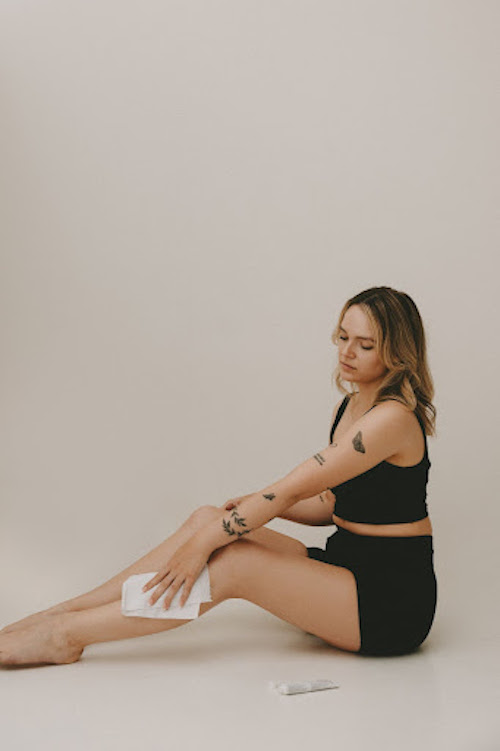
Avoid tanning beds or any type of self-tanner for at least 48 hours before your sugaring appointment. Refrain from consuming caffeine and alcohol for 24 hours leading up to your session. These beverages can dehydrate the skin and increase skin sensitivity. Drink plenty of water before the hair removal process to support your complexion and keep your skin as supple as possible.
While some experts may recommend taking an OTC painkiller, we recommend using Zensa Numbing Cream as a more effective pain prevention option instead. Zensa Numbing Cream contains 5% lidocaine for maximum-strength pain prevention during your sugar hair removal treatment. Our vegan, cruelty-free formula also contains anti-inflammatory vitamin E to help soothe the skin before the treatment even begins.
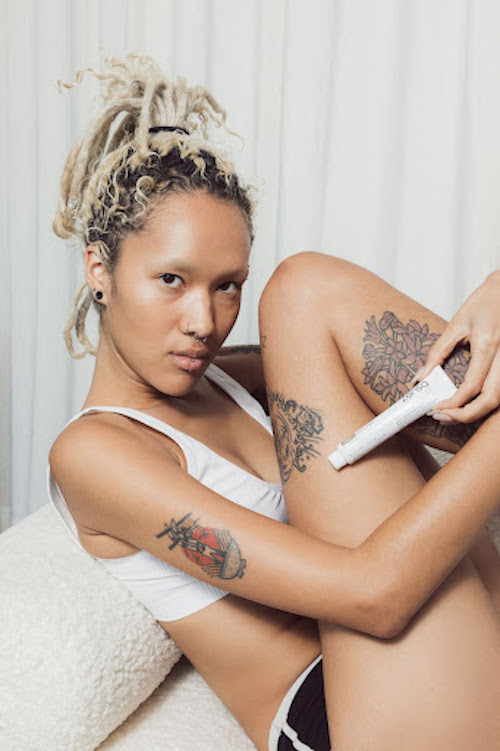
How To Apply Zensa Numbing Cream For Hair Removal:
-
Clean & Apply: Clean the skin with a soapy cloth for 30 seconds. Apply a ½-inch thick layer of Zensa Numbing Cream onto the area. Do not rub it into the skin.
-
Seal: Cover the area with cling wrap (such as Press n’ Seal) for maximum absorption. Leave the cream in place for 15 minutes (Brazilian, underarms and upper lip) or 20-30 minutes (arms, legs, back, stomach).
-
Remove: Take off the cling wrap. Gently dab away (do not wipe) excess cream using sterile gauze. Begin the treatment. Reapply safely on broken skin as needed.
What To Expect During Sugaring Hair Removal:
First, the technician will ask you to change into a dressing gown to make the area easily accessible for sugaring. Next, discuss your treatment preferences with your technician. While you probably booked a sugaring treatment for a specific body part, it is important to discuss details with your expert (especially for more intimate styles like a Brazilian sugar wax).
The technician will clean the area after the brief consultation. A numbing cream, like Zensa Numbing Cream, should then be applied if desired. Make sure to inform the studio ahead of time that you will need an extra 15-20 minutes to let the topical anaesthetic absorb into the skin. Your technician might also apply a powder to protect the skin and help the hair stand out.
After these initial steps are completed, it’s time to apply the sugaring wax paste. An overview of how the sugar paste will be applied is below (and can be followed if you plan on committing to a DIY sugaring treatment, too).
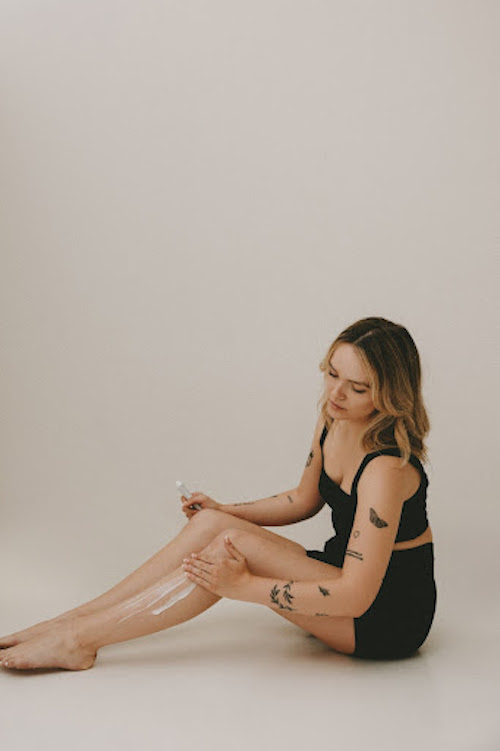
How To Use Sugar Paste For Sugaring:
The sugar wax paste is heated up for 10-20 seconds before being applied to the skin with freshly clean, gloved hands. Leave the sugar paste on for 1-2 minutes. To remove, scoop up and flick off the sugar paste in the direction of the hair growth. Unlike traditional wax strips, sugar paste strips can be reapplied to the same section more than once to ensure all of the hair is removed from the area.
Once the sugaring process is done, your technician will finish the treatment by applying a rejuvenating serum or oil to calm and hydrate the skin and also help prevent ingrown hairs.
Sugaring After-Care: Best Practices & Tips
Your skin is particularly sensitive (and might be a little sore or irritated) after sugar hair removal. The first 48-72 hours after sugaring are the most critical to ensure minimal skin irritation and ingrown hairs. Hydration is essential for the first two days after sugar hair removal. Drink plenty of water and use a fragrance-free, water-based lotion, like Zensa Healing Cream for the next day or two after your sugaring treatment. Keep this skin well-hydrated keeps the skin smoothed, soothed and free of ingrown hairs.
How To Shower After Sugaring:
If possible, wait at least 24 hours to shower after your sugaring treatment. Use lukewarm (never hot) water. Do not use a loofah as these bathing tools often harbor bacteria that can infect the open pores on your newly-sugared skin. Always use a fresh, clean towel out of the wash on the night after your sugaring treatment. Follow up with a water-based moisturizer like Zensa Healing Cream to lock in hydration and repair the skin barrier. Zensa Healing Cream contains soothing ingredients like sunflower seed oil, avocado oil, aloe vera and shea butter. These ingredients offer several benefits for the skin, such as reducing inflammation, fighting bacteria and other microbial activity, promoting wound healing, soothing redness or skin irritation and healing dry, itchy skin.
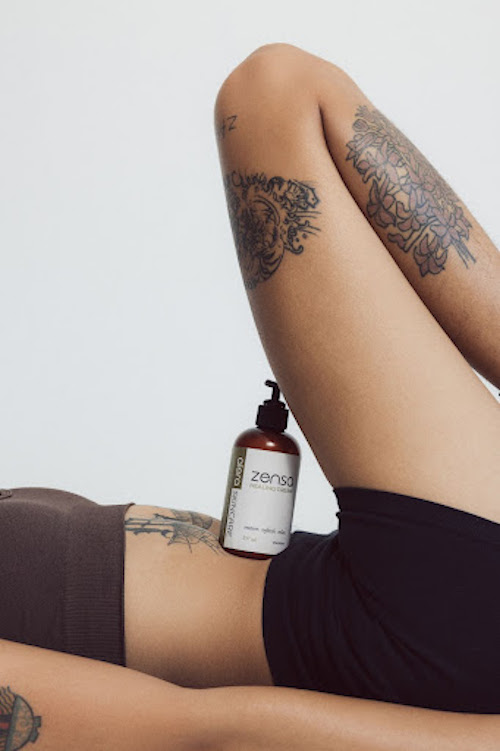
What To Avoid For 24 Hours:
-
Tight Clothing
-
Intense Exercise
-
Deodorant (After Underarm Sugaring Treatments)
-
Makeup (After Sugaring on the Face)
-
Sexual Activity
-
Touching The Area (Includes Tweezing or Shaving)
What To Avoid For 48-72 Hours:
-
Sun Exposure
-
Excessive Heat (Saunas, Hot Showers, Steam Rooms)
-
Tanning Beds
-
Chlorine (Swimming Pools)
-
Exfoliation
-
Moisturizing (especially products containing fragrance or chemicals)
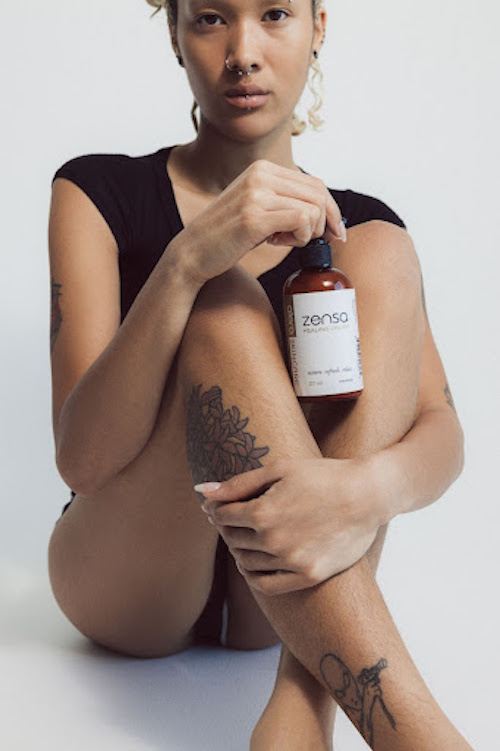
Keeping the area dry and allowing the skin to breathe is essential after sugaring. Wear loose-fitting clothes (like sweatpants or a flowy dress) to your appointment to prevent irritation on your freshly-sugared skin. Avoid wearing tight-fitting clothes throughout the next day. Any fabric that rubs against the skin can create friction or encourage trapped moisture, which makes the area more prone to infection.
Intense exercise, hot water (from saunas, steamy showers, etc.) and any other sweat-inducing activity (like sex) should be avoided for at least 24-48 hours after your sugar hair removal treatment (especially if you have a Brazilian). Hot water, steam and sweat further open up these already-vulnerable pores to excess moisture, which creates a breeding ground for bacteria, dirt and oil to clog pores, cause infection and ingrown hairs or intensify any redness, itching and irritation. Bacteria, dirt, oil and other microbes can also enter these open pores when touched by unwashed fingers or tweezers. Do not pluck, tweeze or pull out any stray hairs immediately after sugaring. This hair removal practice could further irritate the skin and cause more severe inflammation or swelling.
Avoid any products, pollutants or chemicals that could irritate this vulnerable skin. Do not apply deodorant to your underarms or makeup to your face for at least 24 hours after sugaring these areas. Stay out of swimming pools (contains chlorine) or other public bodies of water for at least 48 hours after sugaring. Do not use a tanning bed for at least 2 days following your sugaring session. Keep your newly-sugared skin shielded from the sun (using loose clothing at first and then sunscreen) for at least 48 hours after your appointment.
Exfoliation and moisturizing the skin are important steps in your sugaring after-care routine. However, it is essential to wait at least 48 hours (up to 72 hours if you have sensitive skin) after a sugar hair removal treatment to exfoliate and use any fragrance-containing moisturizer on the skin. At this 48-hour mark, exfoliate the skin to remove any excess dead skin cells to prevent ingrown hairs without leaving your skin vulnerable to a painful rash or severe inflammation.
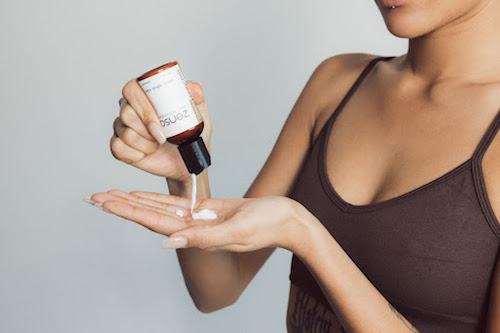
FAQs:
What are the main differences between sugaring vs. waxing?
The two main differences between sugaring and traditional waxing are the ingredients used and the method by which each waxing paste removes unwanted hair. Sugar wax paste contains three simple ingredients (sugar, water and lemon juice). The main ingredients in traditional wax pastes are beeswax and rosin (hard wax) or pine resin and mineral oil (soft wax). However, unlike sugar wax paste, traditional waxing products often contain chemical additives that can irritate sensitive skin. Sugaring removes hair in the direction of hair growth. Traditional waxing removes hair in the opposite direction of hair growth. Sugaring paste only sticks to the unwanted hair, while traditional waxes also adhere to the skin. This difference often makes sugaring less painful than waxing for clients. Sugar wax strips can be applied over the same patch of skin several times for a clean look. Traditional wax strips are only applied once in each area to remove unwanted hair.
How long should you go in-between sugaring appointments?
After your first sugaring treatment, the ideal amount of time to go between sugaring appointments is 2-4 weeks. You will want to continue scheduling your sugaring sessions between 2-4 weeks apart consistently until the hair becomes noticeably thinner and grows more slowly. Once you see these changes in hair texture and growth rate, you can start booking your sugaring appointments between 4-6 weeks apart.
How much does a sugaring treatment cost?
It depends on the area where you get your sugaring treatment done with services ranging anywhere from the $10-$20 range (stomach strip, upper lip, underarms) to the $40-$70 range (full arms, legs, back, stomach, private parts). A Brazilian sugaring wax typically costs around $50-$70 (for both men and women). Many sugaring studios and salons offer the option to combine several treatments to sugar your entire face or body. These package services can cost anywhere from $60-$200+, depending on your location and the areas you choose to treat with sugar hair removal.
